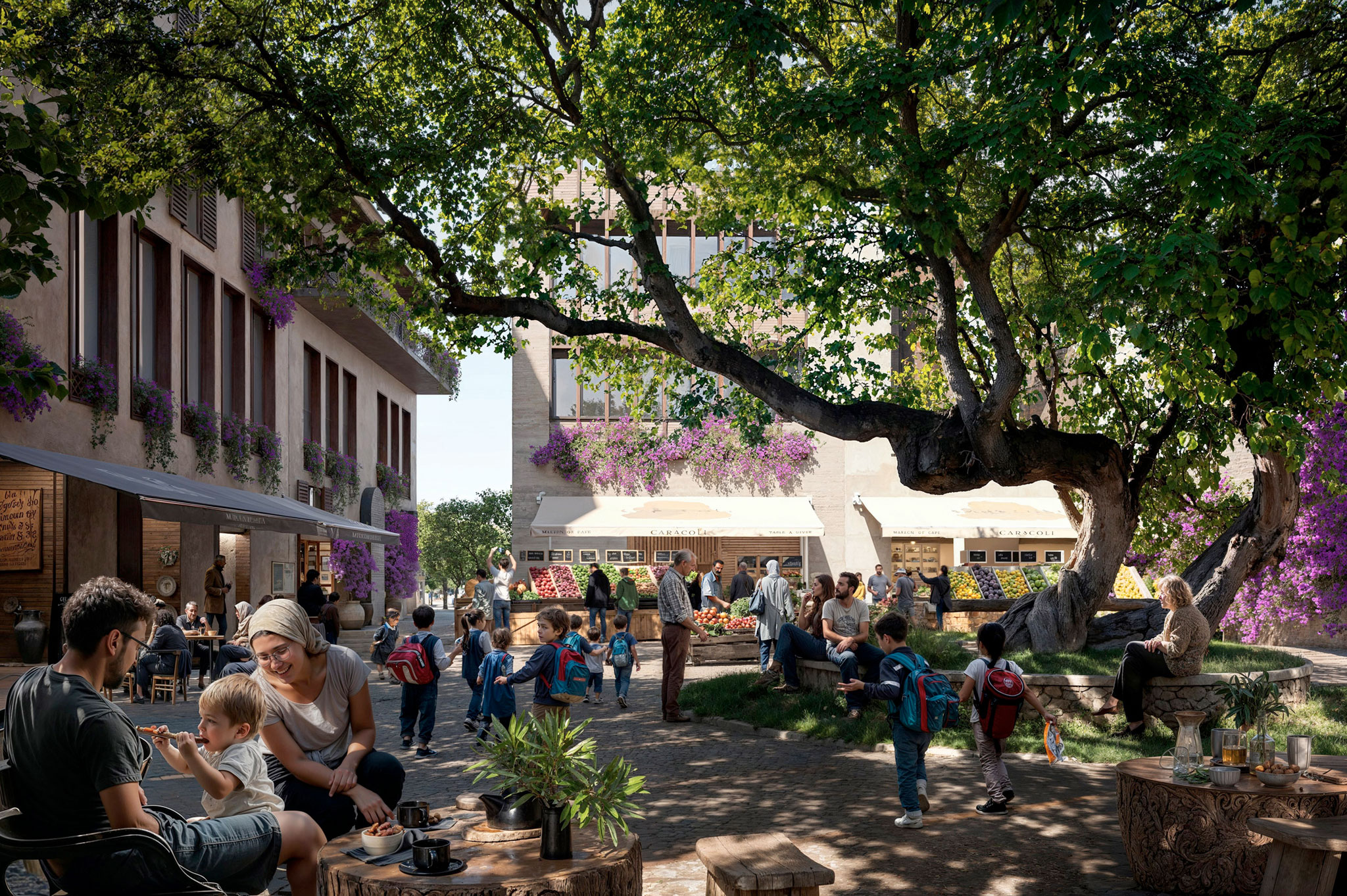Foster + Partners says it is also working closely with several local NGOs and Turkish civil agencies (including the Turkish Design Council, the Turkish Ministry of Environment, Urbanisation and Climate Change, and the Ministry of Culture and Tourism).
Turkish Design Council's regeneration plan to rebuild Turkey, after the earthquake which took place on 6 February 2023, destroying cities and killing more than 50,000 people, entails eight separate "design principles": Build on safe land, Improve circulation, Improve open spaces, Create new districts, Layer neighbourhoods, Enhance connectivity at a city and neighbourhood scale, and, finally, Build back.
 Foster + Partners’ plan for an urban recovery of the earthquake-damaged Turkish cities. Renderings courtesy of Foster + Partners.
Foster + Partners’ plan for an urban recovery of the earthquake-damaged Turkish cities. Renderings courtesy of Foster + Partners.
Other aspects of the published scheme include the regional architecture's traditional building scale, relationships, configurations, facades, and formal language. No exact timelines for its start or completion have been provided.
With an estimated 80 per cent of the city destroyed, there is an urgent need to reimagine and rebuild for future generations. The master plan aims to retain the spirit of Antakya and pre-earthquake characteristics in terms of scale, relationships, and configurations, reinforcing the local character and climate. It will enhance accessibility and inclusivity, with new public green spaces, efficient transportation systems, and community hubs, treating to increase the city’s resilience.




























